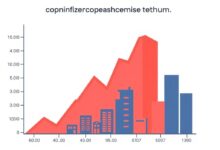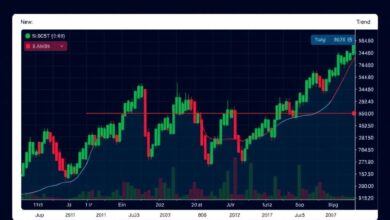How to use financial ratios when analyzing stocks

To achieve a precise assessment of a company’s worth, focus on profitability indicators like earnings per share (EPS) and return on equity (ROE). These figures provide insight into how effectively a firm generates profit relative to its revenue and shareholder equity. A higher EPS indicates stronger profitability, making it easier to compare different firms within the same industry.
Engaging in thorough stock research necessitates an understanding of various performance metrics. Price-to-earnings (P/E) ratio serves as a pivotal tool in this context, allowing investors to gauge whether a stock is undervalued or overvalued compared to its peers. By scrutinizing these financial measures, you can identify potential investment opportunities with promising growth trajectories.
Incorporating these metrics into your investment strategy not only aids in establishing sound valuation but also enhances your overall decision-making process. Pay close attention to trends over time rather than relying solely on one-off data points; this approach ensures a more comprehensive view of a company’s financial health and market position.
Key Ratios for Investors
Focus on the P/E ratio as a primary tool for valuation assessment. A low P/E suggests undervaluation, while a high P/E may indicate overvaluation. Compare the P/E of a company with its industry peers to gauge relative performance.
Evaluate earnings per share (EPS) to understand profitability trends. Consistent growth in EPS can signal strong management and operational efficiency. Look for companies that show an upward trajectory in EPS over several quarters.
Return on equity (ROE) is another critical metric; it measures how effectively a company utilizes shareholder equity to generate profits. A higher ROE indicates better management performance, making it essential for comparison across similar entities.
Consider the debt-to-equity ratio to assess financial leverage. A lower ratio suggests less risk, while a higher ratio may indicate potential difficulties in times of economic stress. Aim for balance, particularly in capital-intensive industries.
Lastly, investigate operating margin as it reflects core profitability before interest and taxes. Higher operating margins suggest greater pricing power and cost control, which are indicative of robust business models.
Interpreting Price-to-Earnings Ratio
The Price-to-Earnings (P/E) ratio serves as a critical tool in assessing stock valuation. A lower P/E may indicate that a company is undervalued, suggesting potential for growth, while a higher P/E could signal overvaluation or high investor expectations.
To interpret the P/E ratio effectively, consider the earnings per share (EPS). A rising EPS alongside a stable or declining P/E indicates improved profitability and may point to an attractive investment. Conversely, if EPS is stagnant but the P/E increases, it raises concerns about sustainability.
Comparing a company’s P/E with industry peers enhances context. If a firm displays a significantly higher ratio than competitors, investigate underlying reasons–this might reflect superior growth prospects or inflated market sentiment.
Additionally, consider historical trends of the same company. Fluctuations in its own P/E can reveal shifts in market perception or changes in profitability dynamics over time.
Lastly, analyze macroeconomic factors influencing valuations. Economic conditions often impact investor sentiment and can skew P/E ratios across sectors. Understanding these external variables aids in making informed decisions during stock research.
Assessing Debt-to-Equity Levels
Examine the debt-to-equity (D/E) ratio to gauge a company’s financial leverage and risk profile. A lower D/E indicates stability, while a higher ratio can signify increased financial risk.
- Optimal Range: Aim for a D/E ratio below 1. This suggests that the company is not overly reliant on debt to fuel its growth.
- Industry Comparison: Compare D/E levels within the same sector. Different industries have varying capital structures; technology firms may operate with higher ratios than utility companies.
- Growth Potential: Consider how debt impacts profitability. Companies with manageable debt can invest in opportunities, enhancing valuation over time.
- Caution Signals: Ratios above 2 may raise red flags, indicating potential cash flow issues or vulnerability during economic downturns.
Integrate this analysis into broader stock research. Assess how D/E correlates with other metrics like price-to-earnings (P/E) ratios to form a complete picture of valuation and profitability.
- Analyze historical trends in D/E for consistent patterns.
- Evaluate management’s strategy regarding debt utilization and equity financing.
- Monitor interest coverage ratios alongside D/E for a comprehensive risk assessment.
This multifaceted approach provides clarity on whether the current capital structure supports sustainable growth and aligns with investment objectives.
Comparing Return on Equity
Focus on comparing Return on Equity (ROE) across companies within the same industry to gauge profitability effectively. A higher ROE indicates more efficient management in generating profits from shareholders’ equity. Aim for a benchmark of at least 15% as a threshold for strong performance.
Examine historical ROE trends over several years to identify consistency or volatility. A stable or increasing ROE suggests sustained business health, while fluctuating figures may signal operational challenges. Consider the context: an initially low ROE might improve with strategic changes, making it essential to analyze growth potential.
Cross-reference ROE with the price-to-earnings (P/E) ratio. A high P/E ratio coupled with a solid ROE can indicate that investors are willing to pay a premium for growth, reflecting confidence in future profitability. Conversely, a low P/E alongside high ROE might suggest undervaluation, presenting a potential investment opportunity.
Keep an eye on industry averages and competitors’ performances. If a company consistently outperforms its peers in ROE while maintaining reasonable debt levels, it could signify superior management or competitive advantages. Such insights enhance stock research and aid in valuation assessments.
Lastly, incorporate other profitability metrics like Return on Assets (ROA) to paint a fuller picture of financial health and operational efficiency. This holistic approach allows for informed decisions based on comprehensive data analysis rather than isolated figures.







